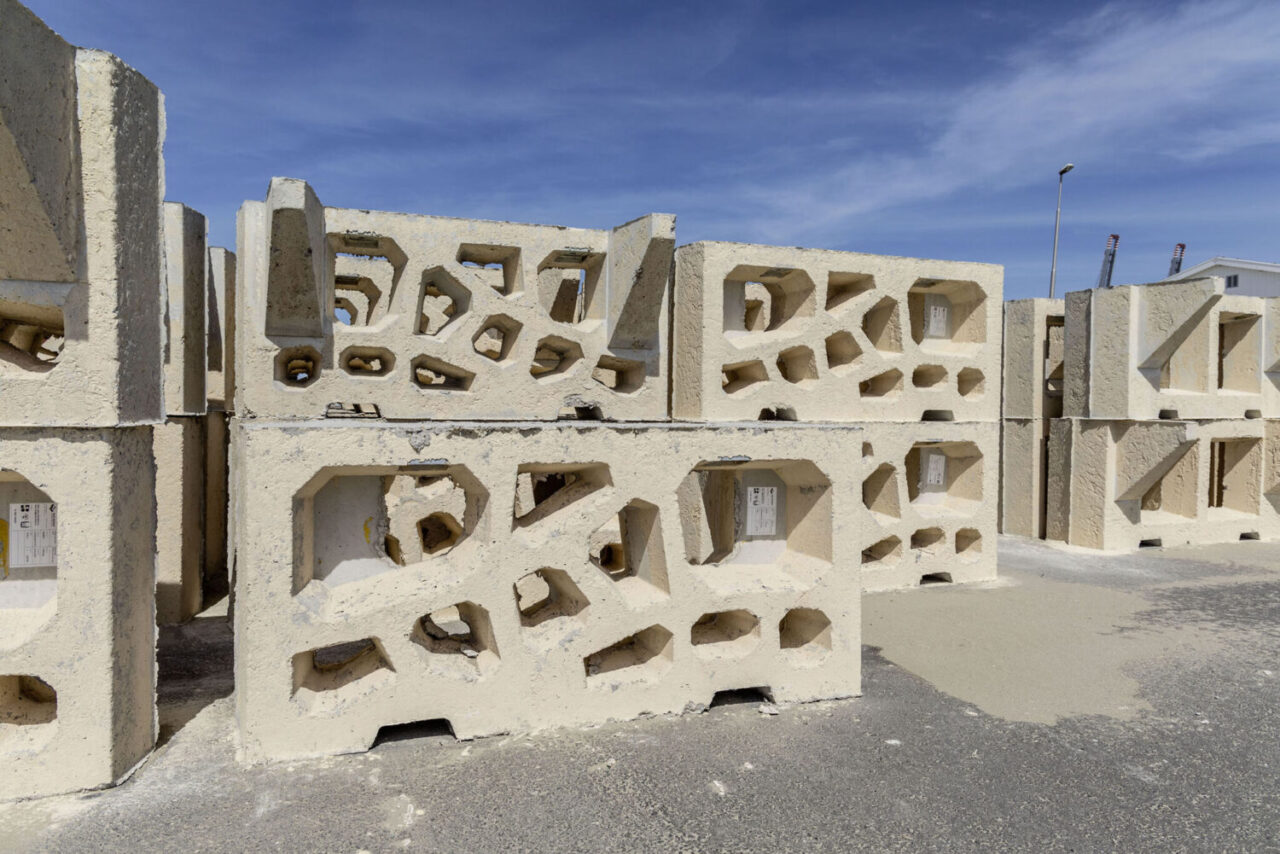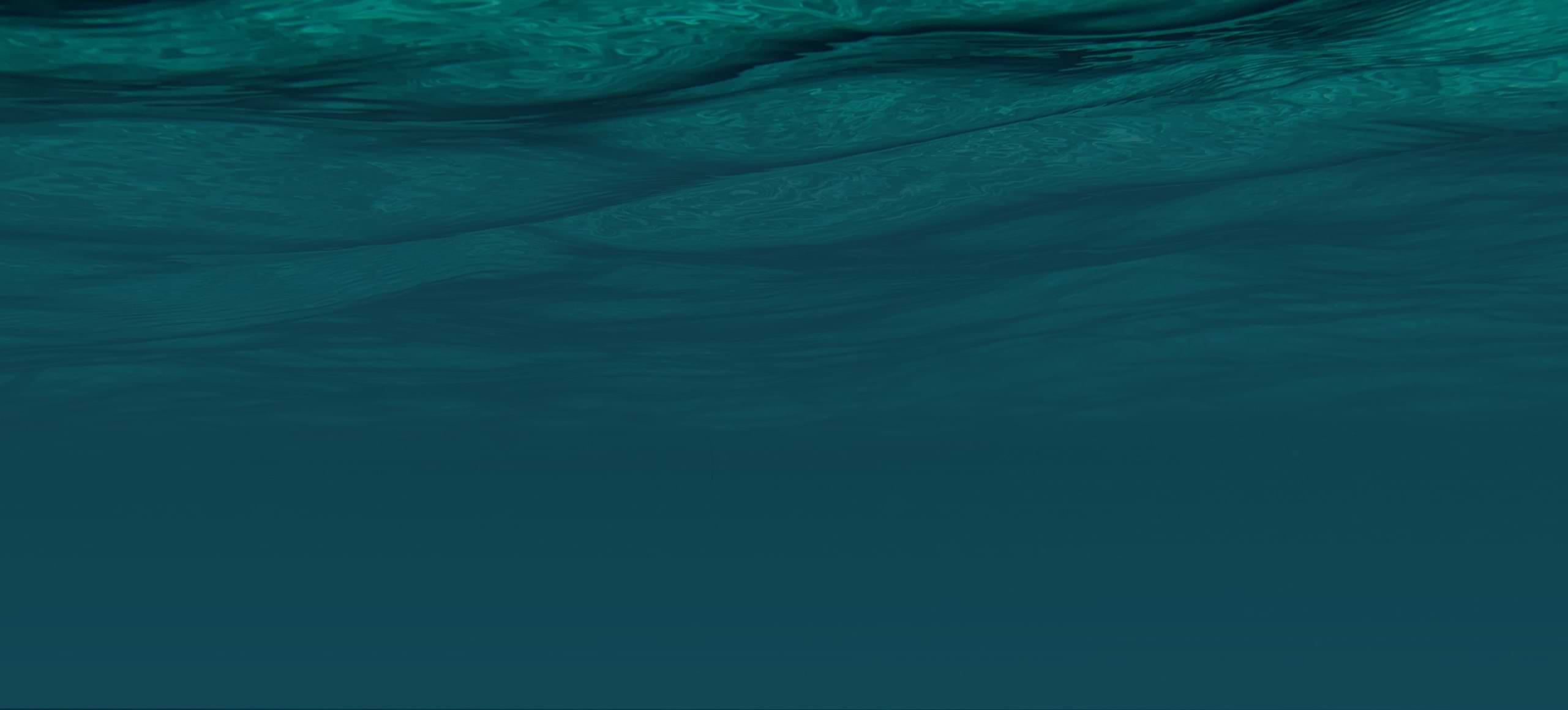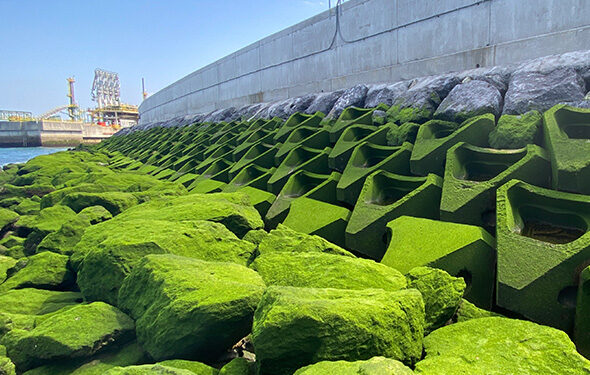
The Goal
Biologically enhance the quay wall of the new port extension. The nature based design of the units mimics favorable habitat conditions of local native target species.

The Challenge
Our marine biologists together with local scientists conducted surveys of marine life at the Port of Rotterdam to determine target native species. We set out to design a unit that would withstand hydrodynamic forces from waves and ship-induced currents including thrust from high-powered tug boats and promote marine life settlement.
How we built it
Our designers and engineers analyzed hydrodynamic forces of local currents and waves induced from boats to create solutions that could be integrated into the sheetpiled quaywall and will comply with 120 years service life. The nature based design of the units mimics favorable habitat conditions of local native target species. The bio-enhancing concrete surfaces invite algae, oysters, and sponges along with fish, crabs, worms, and snails to settle on and around the quay wall. Local biologists will monitor the units in the coming 1-2 years to determine the ecological uplift. The units were produced locally by Dutch manufacturer, and casted with our design and concrete technology.







